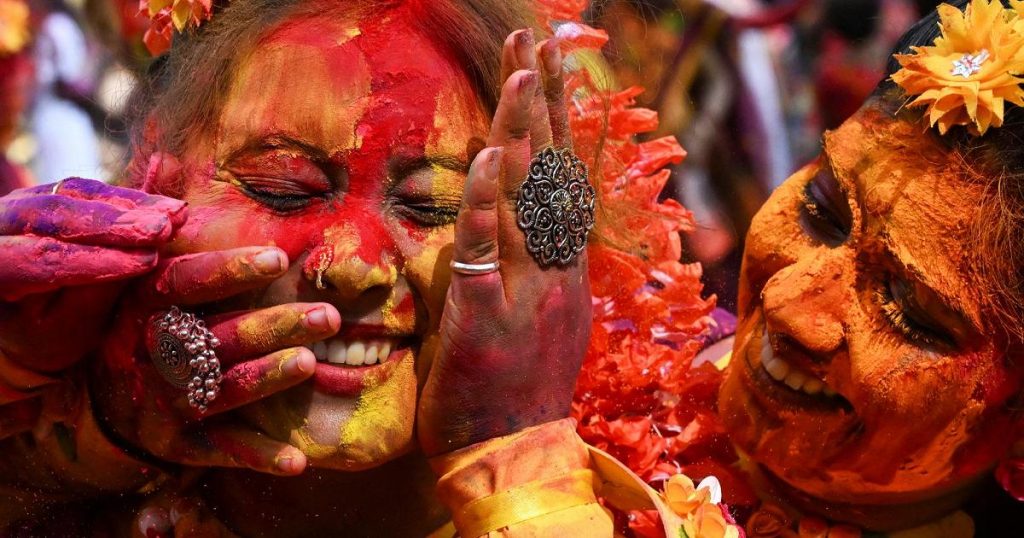Today in India, the week of Holi, the festival of colors, comes to a close. People of all ages gather in front of temples before taking part in colorful events where they joyfully smear each other with brightly colored powders called ‘gulal’. Traditional bonfires were also lit last night as part of Holika Dahan, a purification ritual symbolizing the victory of good over evil. Holi, a religious festival for centuries marking the arrival of spring and emphasizing rebirth and reincarnation, has evolved into a carnival-like event loved by tourists and photographers and has been exported worldwide.
The celebration of Holi in India involves large crowds, vibrant colors, and a sense of joy and camaraderie. Participants revel in the tradition of smearing each other with colorful powders, symbolizing the shedding of inhibitions and embracing the spirit of the festival. Holika Dahan, the burning of bonfires, is a symbolic ritual marking the victory of good over evil and the triumph of light over darkness. The festival of colors has a long-standing religious significance, but it has also become a popular event that attracts tourists and photographers from around the world.
Throughout the week of Holi, people in India come together to celebrate the festival with enthusiasm and excitement. The streets are filled with music, dance, and laughter as participants indulge in the joyous atmosphere of the occasion. The colorful powders used during Holi, such as pink, yellow, turquoise, orange, and emerald green, create a vibrant and festive atmosphere that adds to the sense of celebration. The tradition of smearing each other with these colorful powders highlights the playful and lively nature of the festival, encouraging people to let go of their inhibitions and celebrate with abandon.
Holi has a deep-rooted religious significance in India, as it marks the arrival of spring and the beginning of a new season. The festival is a time for spiritual renewal, reflection, and celebration of life’s cyclical nature. The tradition of Holika Dahan, with its symbolic bonfires, represents the victory of good over evil and the triumph of light over darkness. Holi has evolved over the years from a religious observance to a popular cultural event that is celebrated with great enthusiasm and zeal by people of all ages and backgrounds.
The popularity of Holi has grown beyond the borders of India, with the festival being celebrated in various parts of the world. Tourists and photographers are drawn to the vibrant colors, lively atmosphere, and cultural significance of the festival, making it a global phenomenon. The festival of colors has become a symbol of unity, joy, and togetherness, bringing people from different cultures and backgrounds together to celebrate the beauty of life and the changing of seasons. The infectious spirit of Holi has captivated people across the globe, spreading the message of love, peace, and harmony.
As Holi comes to a close in India, the memories of the colorful celebrations and joyous festivities will linger on in the hearts of people. The festival of colors has left a lasting impact on those who have participated in the celebrations, reminding them of the beauty of life, the importance of unity, and the power of celebration. Holi has transcended its religious origins to become a cultural and social event that connects people from all walks of life, inspiring them to embrace the spirit of joy, love, and camaraderie. The legacy of Holi continues to resonate around the world, spreading happiness and positivity wherever it goes.


